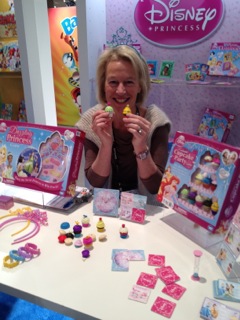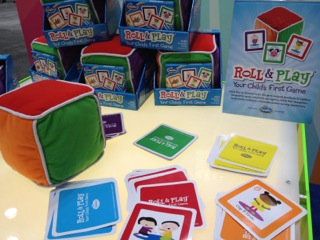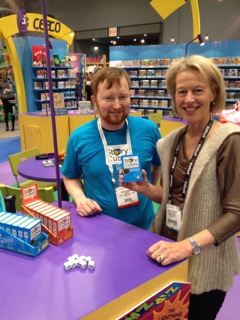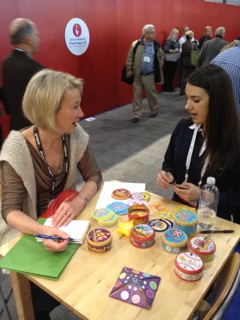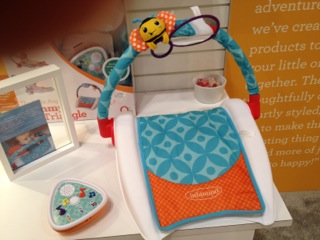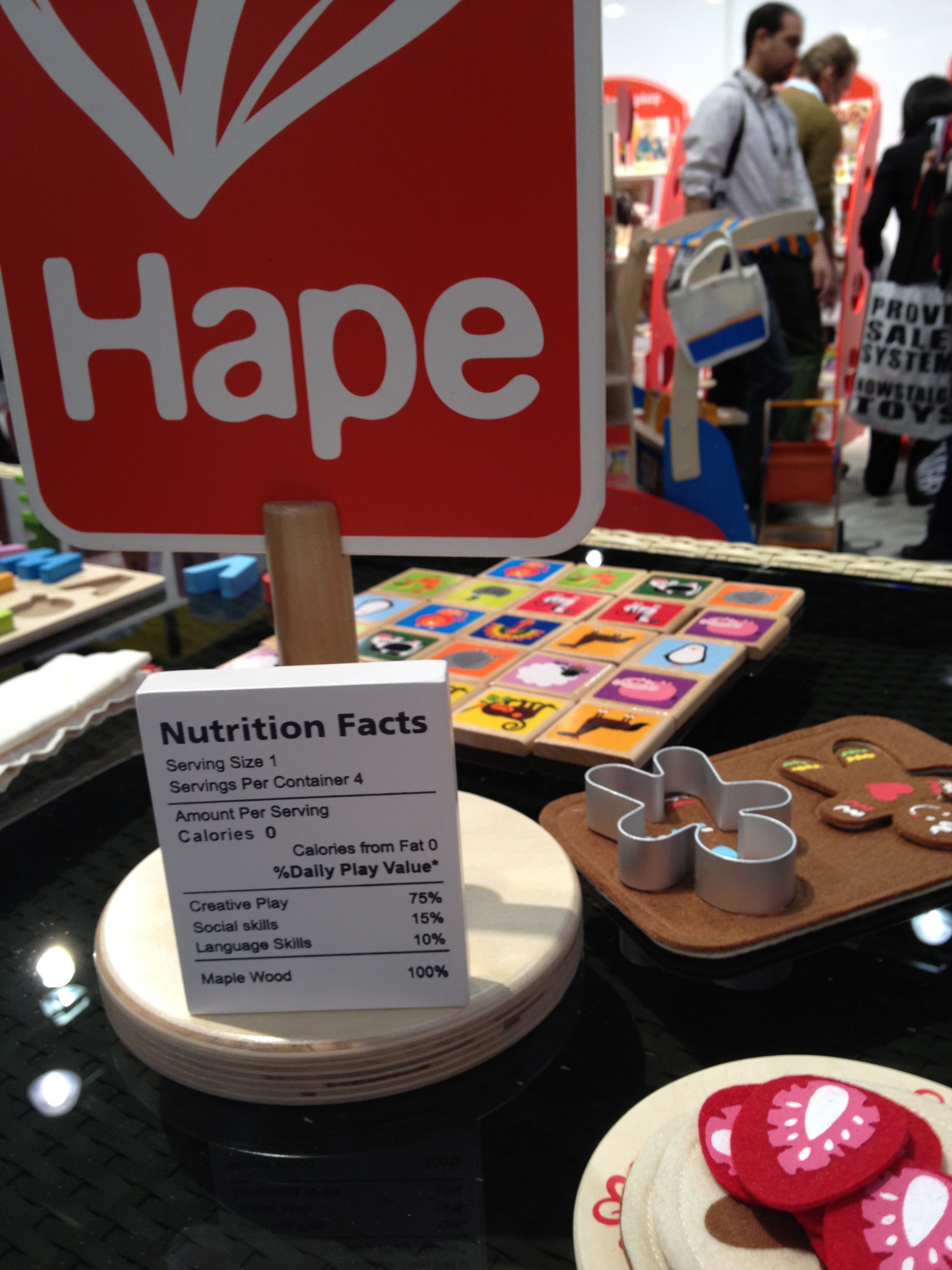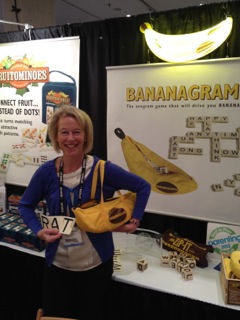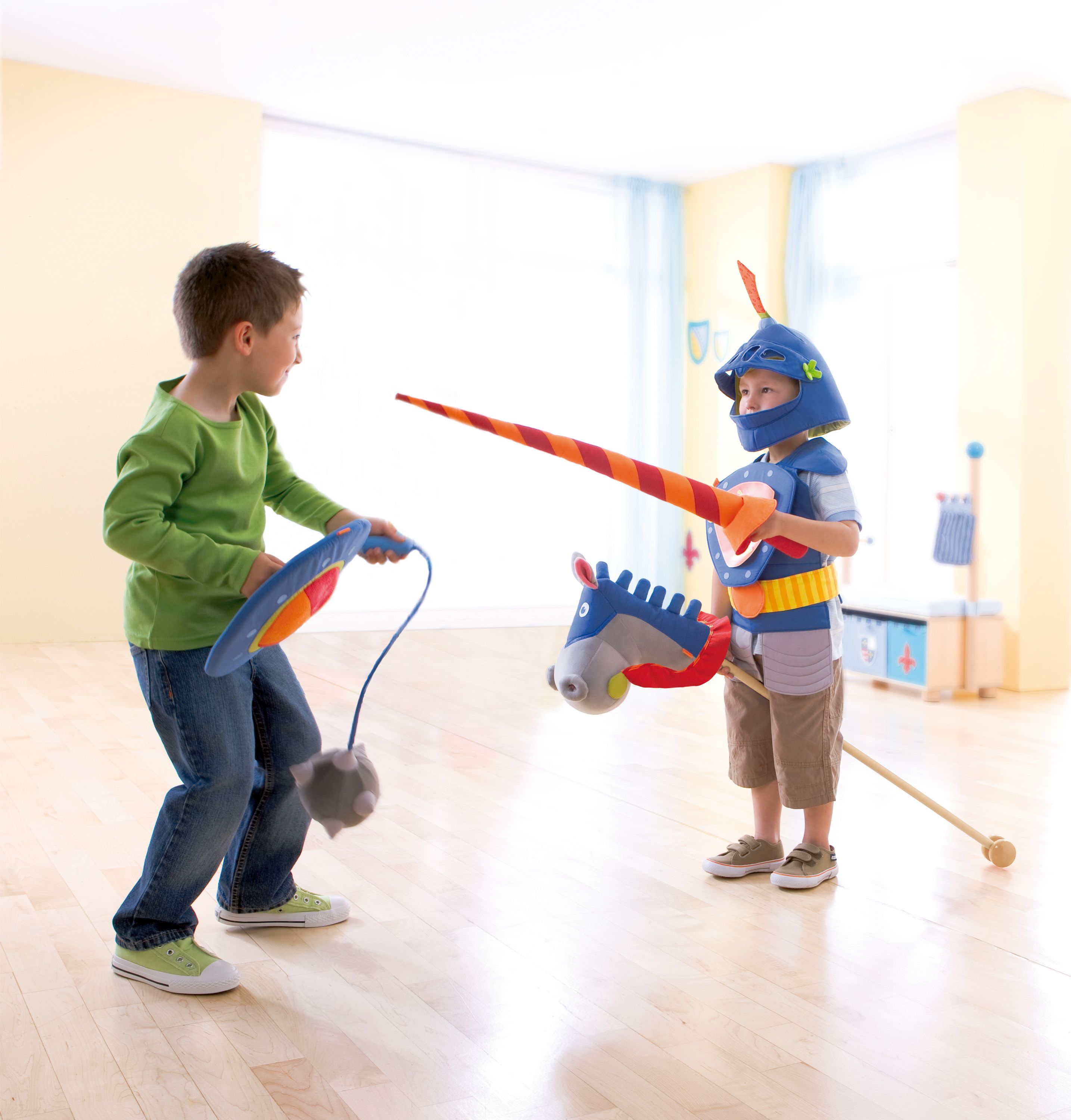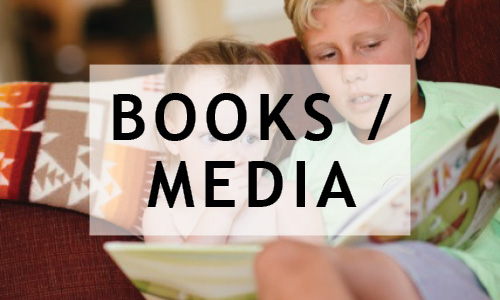Earning bling for my princess tiara, landing at the secret rangers headquarters, shooting mini-marshmallows, cuddling up in a wearable puppet, guessing, rhyming, plinking and popping, I was captivated by every minute of the 2012 New York International Toy Fair. The air was alive with excitement as I talked to inventors, tried out products, and listened to manufacturers about the play potential of the best new products to benefit our kids with special needs. For the first time in my 6 years of attending the show, I saw an increased interest from the toy industry in learning how their products can be helpful. Companies were hearing from retailers that parents had successfully used their products to strengthen specific skills related to disabilities.
More than one-fifth of US households with children have at least one child with special needs. About 5.8 million of the nation’s schoolchildren, ages 6 to 21, are receiving special education services (about 61 percent percent of those students have specific learning disabilities or speech or language impairments) and that doesn’t include preschoolers who are targeted for early intervention. Several national organizations and popular blogs are getting the word out about effective diagnosis, treatment and recommended techniques and products to build delayed skills. People are getting it–this is a population that wants, needs and deserves to be taught with the best, most innovative and most importantly, FUN toys to advance their development. Parents of children with special needs want their kids to enjoy the same play experience as their peers and siblings. Their child’s days are often filled with hours of specialized therapy that can and should be augmented with great play using mainstream toys.
Here are some of the companies that are interested, listening, learning and responding:
Charlotte Fixler, Communication Manager and Education Specialist at ThinkFun, said “I’ve heard from more speech therapists this year than ever before about how they effectively use our games for speech therapy. Speech therapists are an incredibly creative group.” Once again, ThinkFun has several new games that would adapt well to speech therapy including their first toddler game, “Roll & Play” which includes a large soft block with primary colors on each side. Toss the plush cube and match the color to a card and perform that activity, “Make a happy face” or “Moo like a cow.” Check out ThinkFun’s blog, SmartPlay for inspiration on how games can help those struggling to learn due to disabilities or accidents. Recently a woman wrote, “I want to thank you for creating a game that children love, and one that helps heal a brain that has been so badly damaged.”
Rory O’Connor, the inventor of Gamewright’s “Rory’s Story Cubes,” has heard from so many parents and education professionals working with children and adults to develop language and communication skills, confidence and self-expression and he is still listening. “When we designed the original Rory’s Story Cubes®, we made them compact enough to fit in a bag or pocket. This was so that your set of Rory’s Story Cubes® would always be to hand when needed. Since launching in 2009, we have been regularly asked by parents and professionals working in the area of special needs, if we would consider making a version of Rory’s Story Cubes® using bigger dice. The main reasons why they want this larger set are:
- Supporting reduced motor skills. For some players with reduced motor skills it is difficult to pick up small objects.
- Supporting reduced vision acuity. Some players find small images difficult to read.
- Avoiding accidental choking hazards. We have learned that for some players it is important that the dice are made bigger to avoid choking.
- Group Training. Trainers and facilitators working in larger groups would also like bigger cubes to aid group storytelling.
It is important to us that Rory’s Story Cubes can be enjoyed by as many people as possible. One of the most rewarding things for us is hearing feedback from parents and teachers who tell us how Rory’s Story Cubes is allowing self-expression among children and adults who would normally find it difficult to do so.” The result of their feedback is the design of “Rory’s Story Cubes: MAX,” larger cubes for easier manipulation and recognition. You can weigh in on the subject on Rory’s website here.
Blue Orange Games contacted me to assess the therapeutic value of their games from a speech and language perspective. I have been blogging about their great games for years with specific tips on how to use them in speech therapy. This year I found an even greater array of games loaded with language learning potential: “Shrimp Cocktail,” “Chef Cuckoo” and “On the Road,” all round card games in a take-along tin (great for the itinerant therapist) which involve vocabulary, description, selling your dish concocted by the chef, and calling out what you see on a road trip! Again, my observations from 15,000 hours of kid work have been born out–great language flows from excellent toys and games. It can’t be contained.
Step2/Infantino has launched the initiative,
“Everybody Plays,” according to Colette Cosky, Senior Brand Manager at Infantino. “We are committed to diversity in our brand communications. The Everybody Plays campaign encourages all kids together, including children with special needs, because everybody plays. As a company we feel it is our responsibility to show diversity on all levels of our visual communications. The more we do our part, the greater potential that society as a whole will see inclusiveness as the norm.” At the Toy Fair, I was introduced to specific products that are great for typically developing children but have also served kids with special needs in advancing their development such as “Right Angle Tummy Triangle”, developed with pediatric occupational therapists, to build upper body strength and balance, which contributes to early speech development.
Hape Toys knows that language is an important ingredient in learning. Their bright, durable wooden toys are rich in open-ended language play. The recent re-branding of the
Educo line reflects their emphasis on educating kids through creative play– “Learning is at the Heart of Our Toys.” In talking to Robin Lehnert, Hape’s Marketing Manager of Hape North America, it is obvious that they look closely at their products that are designed to grow all kids but might have the criteria to help build specific skills for kids with disabilities. Their “Eggspressions,” a set of wooden eggs with different facial expressions on them, is a helpful tool to get kids talking about and naming their emotions while building social language.
The Wonder Forge consistently produces fun preschool board games embedded with language learning and preschool skills. I am in touch with their inventors, president and marketing team, pointing out the developmental learning in their games. Their games cultivate language from “Richard Scarry’s Busytown Eye Found It! Game” which is a great vocabulary builder to their new products, “Enchanted Cupcake Party” and “Dazzling Princess’ which encourage sequencing, while baking princess cupcakes, earning jewels for answering princess questions, or role play. Kimberley Pierce, WonderForge’s VP of Marketing Communications, shared, “We’ve heard from a number of parents over the years who tell us that our Wonder Forge games have helped their children with special needs develop important skills. We intentionally build in age-appropriate learning in our games. We try to engage kids physically, socially, and creatively, so there are many different ways for children to connect with the content and enjoy the fun.”
Judee Cohen, Public Relations Consultant at Bananagrams, was very interested in hearing about any success stories I had in using their games with kids with special needs. We discussed how many kids on the autism spectrum are hyperlexic, exhibiting an intense interest in letters, so Bananagrams’ letter games would capitalize on that for learning. This year, their introduction of a larger “Jumbo Bananagrams” and “Zip-It” allows for more active play outside and certainly easier manipulation for kids with special needs.
HABA USA‘s president, Lea Culliton hit on why their products are effective with kids with special needs–durability, multi-levels of play, and the fun factor that joins them with their siblings. “HABA is continuing to learn just how much our products are being embraced by the community of parents with children of special needs. I’ve been told that the durability of our wooden blocks, game boards, boxes and game pieces and the various levels of play that the HABA assortment offers these families is very strong. Families comment on how their children with no challenges can easily interact and not get ‘bored’ playing our games with their siblings with special needs. What may seem as a simple color sorting or stacking game can provide hours of fun just interacting with the pieces of the products themselves. HABA USA will continue to take that feedback back to Germany to our designers to continue to provide the extended value of play within our assortment.” Some of HABA’s new products that I liked for language learning were their pirate and knight costumes, “Henry Haba” and “Captain Charlie,” as well as their preschool playsets with just enough direction for play but open-ended for the child to lead–“Large Playset on the Farm,” and “Out and About With Tom,” which includes a train and add-on road or track. Several “First Games” for 18 months and up promote early learning too.
I see a powerful synergy growing in the toy industry–between manufacturers and retailers who value specific learning features in their products, parents of kids with special needs pursuing skill-building products and creative educators and therapists sharing what toys work best to advance skills.
As therapists, educators and parents we should collaborate with and support these companies, not only by using their products but providing them with feedback on how their toys and games have been helpful to our kids, so more children can benefit. Send a detailed lesson plan, a success story or a picture to encourage manufacturers to keep our kids in mind when developing and marketing their products to help all kids. After all, isn’t that one of the first concepts we learned as educators, to reinforce behavior we want to continue?
